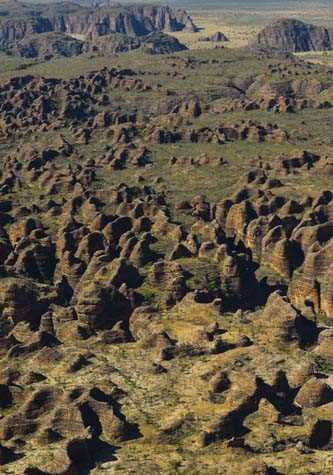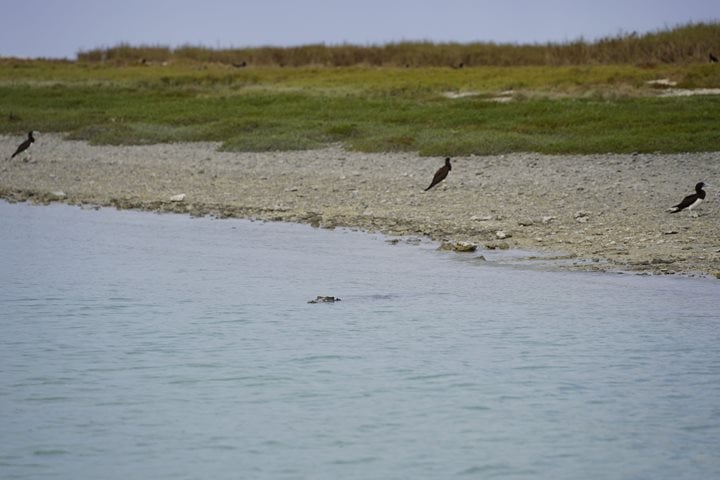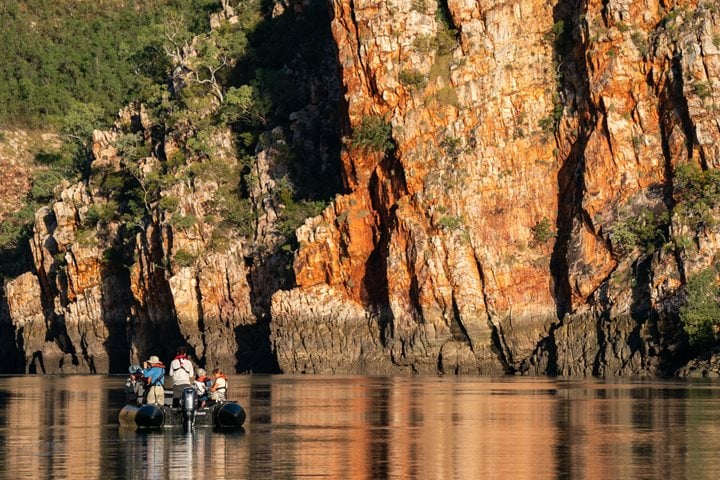After an astounding trip blessed with excellent weather and amazing adventurers around the Kimberley coastline. It was time for the National Geographic Orion to dock at Wyndham River Wharf. Wyndham is the oldest and northernmost town in the Kimberley region and also the gateway to many special attractions. Today we had the opportunity to explore the fantastic interior of this area, flying over the remarkable geological formations of the Bungle Bungles, or enjoying a river cruise upstream the picturesque Ord River.
Purnululu National Park, where the Bungles Bungles is located, was declared a UNESCO World Heritage Site in 2003. Although this region was extensively used by Aboriginal people during the wet season, when plant and animal life was abundant, few Europeans knew of its existence until the mid-1980s. Rising up to 578m above sea level and composed of sandstone and conglomerate rocks deposited approximately 375 - 350 million years ago, the Bungles appear from above as a grouping of multicolored domes. The alternated layers of orange oxidized iron and gray cyanobacteria can be observed at this Devonian-age cone-karst geology.
The scenic flight also took us over the Argyle mine, the world’s largest diamond supplier and over Lake Argyle, the largest artificial lake in Australia, created by the damming of the Ord River.
Due to the intense precipitation occurring at this area during the wet season, the Ord River experiences massive flows. The river system is constituted of a perennial watercourse and the preeminent scenic area is located between Kununurra and the Argyle Dam. Covering more than 55 km, we explored this section on board of a fast boat that raced up the stream, swerving around rocks and fallen trees. We were able to observe thriving fauna and flora, sighting many specimens of Freshwater crocodiles. Many species of birds were also sighted, including the magnificent White Bellied Sea Eagle, Australasian Darters, Pied Cormorants, Comb-crested Jacanas, Egrets, Ospreys, to name a few. We were lucky enough to sight a Short Eared Rock Wallaby; Black Flying Foxes colonies and the elusive Dingle. This beautiful river is also habitat to 4 species of turtles, 6000-8000 resident freshwater crocodiles and over 300 species of birds.
On our way back to National Geographic Orion we visited a historical homestead that belonged to the Durack family and learnt some interesting facts about the life and pioneer colonization of this unforgiving and challenging region. At this picturesque house, some had the opportunity to see a bowerbird in action, proudly displaying his intricate nest.
Back on board to the comforts of National Geographic Orion, we enjoyed another appealing dinner. To end the day, our crew entertained all with a great show. As we sailed into sea, it was time for contemplation and reflection about our special discoveries and experiences at the magnificent Kimberley region.







